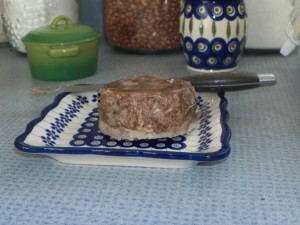Dinner
- Ham: cured under the stairs for 16 months. Two slices boiled for ten minutes, fried until crisp.
- Turnip Greens: steamed in the ham water for a few minutes.
- Corn: Cooked with honey from our hives.
- Cornbread: Local cornmeal, eggs from our hens, fresh churned buttermilk from a local dairy.
- Dessert: cornbread and butter, with Steen’s syrup for me and blackberry honey for Cindy.
East Tennessee protocol for when to wave or honk
- Women seldom wave while driving.
- When standing alongside the road collecting mail or talking with a neighbor one always raises their hand in greeting to passing cars or trucks. But, one rarely looks up at the passing vehicle. Instead slightly incline your head in that direction and toss your whole hand up.
- While driving your truck never wave at a car unless it is family or a neighbor. Car drivers do not wave.
- When passing another truck on the road, grip the top of the steering wheel with your left hand and extend your forefinger to the horizontal. If you think you recognize the truck from your section of the valley then extend the forefinger finger to the 2 o’clock position. If it is a neighbor then toss up 2-3 fingers while still keeping your palm on the steering wheel.
- Horn honking is reserved to two toots. Honking your horn when passing the person or persons by the road, when they have just casually thrown up their hand, says I’m your neighbor. Otherwise, a horizontal one fingered wave is appropriate after the honk, even though they are not looking.
- Always toot twice when passing a tractor. People who honk once usually accompany the sound with a raised index finger. Be a good neighbor.
Top 3 signs your dog is coming into heat
- The other dogs become aggressive.
- The male dogs stop eating.
- The male dog practices mounting Forsythia bushes, rocking chairs, bales of hay or if you are not careful….

